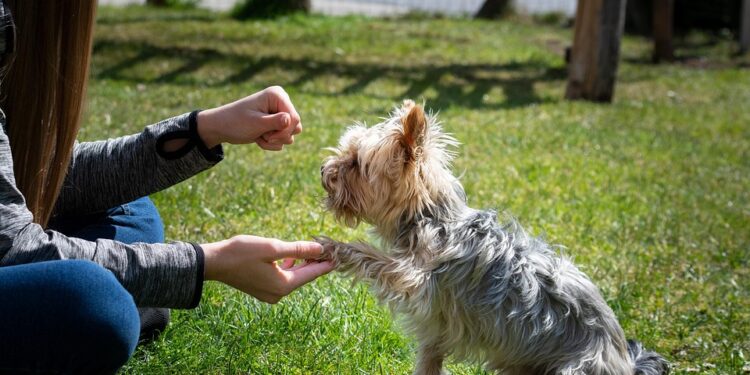Mastering the Mind of Man’s Best Friend: A Guide to Effective Dog Behavior Training
As pet owners, we all want our furry companions to be well-behaved and obedient. But sometimes, our dogs can exhibit unwanted behaviors that can be frustrating and challenging to correct. The key to successful dog behavior training lies in understanding and mastering the mind of man’s best friend. In this comprehensive guide, we will explore effective strategies and techniques to help you train your dog and foster a harmonious relationship.
The Importance of Dog Behavior Training
Proper dog behavior training is essential for a happy and healthy relationship between you and your canine companion. Training helps establish boundaries, improve communication, and build trust between you and your dog. It also enhances your dog’s mental stimulation and overall well-being. By investing time and effort in training your dog, you can prevent behavioral issues, such as aggression, excessive barking, and destructive chewing.
Understanding Dog Behavior
Before diving into dog behavior training, it is crucial to understand the underlying reasons behind your dog’s actions. Dogs communicate through body language, vocalizations, and behaviors. By observing your dog’s cues and signals, you can gain insight into their emotional state and motivations. Common dog behaviors, such as wagging tail, barking, and jumping, can convey different messages depending on the context.
Common Dog Behavior Issues
Some common dog behavior issues that pet owners may encounter include:
- Aggression towards humans or other animals
- Excessive barking or whining
- Jumping on people
- Destructive chewing
- Potty training accidents
Effective Dog Behavior Training Techniques
When it comes to training your dog, consistency, patience, and positive reinforcement are key. Here are some effective techniques to help you address common behavior issues and shape your dog’s behavior:
1. Positive Reinforcement
Positive reinforcement involves rewarding your dog for good behavior with treats, praise, or toys. This method helps reinforce desired behaviors and creates a positive association with training. When your dog performs a desired behavior, immediately reward them to strengthen the behavior.
2. Clicker Training
Clicker training is a popular training method that uses a small device called a clicker to mark desired behaviors. When your dog performs a behavior correctly, you click the device and reward them with a treat. This method helps dogs learn new behaviors quickly and effectively.
3. Consistency
Consistency is crucial in dog behavior training. Set clear rules and boundaries for your dog and enforce them consistently. Inconsistency can confuse your dog and make training less effective. Stick to a routine and be patient with your dog as they learn new behaviors.
4. Socialization
Socialization is essential for a well-behaved and well-adjusted dog. Expose your dog to different people, animals, and environments to help them develop social skills and confidence. Positive experiences during socialization can prevent fear and aggression in unfamiliar situations.
Common Questions About Dog Behavior Training
Here are some common questions pet owners may have about dog behavior training:
1. How long does it take to train a dog?
The time it takes to train a dog depends on various factors, such as the dog’s age, breed, and previous training experience. Some behaviors may be learned quickly, while others may require more time and patience.
2. What should I do if my dog exhibits aggressive behavior?
If your dog exhibits aggressive behavior, it is essential to seek professional help from a certified dog trainer or behaviorist. Aggression can be a serious issue that requires specialized training and management techniques.
3. Can I train an older dog?
Yes, older dogs can be trained, but it may take more time and patience compared to training a puppy. With consistent training and positive reinforcement, older dogs can learn new behaviors and habits.
Conclusion
Mastering the mind of man’s best friend requires patience, consistency, and understanding. By investing time and effort in dog behavior training, you can build a strong bond with your canine companion and enjoy a harmonious relationship. Remember to be patient, use positive reinforcement, and seek professional help when needed. With dedication and love, you can help your dog become a well-behaved and obedient member of your family.
Implementing the techniques outlined in this guide can help you effectively train your dog and address common behavior issues. Remember to be patient, consistent, and positive in your approach to training. With dedication and love, you can help your dog become a well-behaved and obedient companion. Happy training!














































